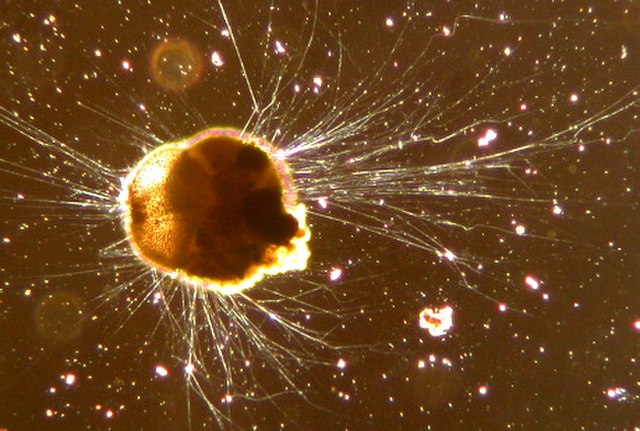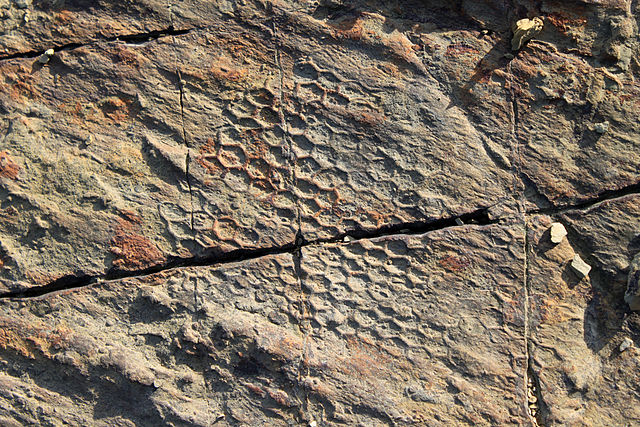A nummulite is a large lenticular fossil, characterised by its numerous coils, subdivided by septa into chambers. They are the shells of the fossil and present-day marine protozoan Nummulites, a type of foraminiferan. Nummulites commonly vary in diameter from 1.3 cm to 5 cm and are common in Eocene to Miocene marine rocks, particularly around southwest Asia and the Mediterranean in the area that once constituted the Tethys Ocean, such as Eocene limestones from Egypt or from Pakistan. Fossils up to six inches wide are found in the Middle Eocene rocks of Turkey. They are valuable as index fossils.
Nummulite
Fossil nummulites in Urbasa, Navarre
Foraminifera are single-celled organisms, members of a phylum or class of Rhizarian protists characterized by streaming granular ectoplasm for catching food and other uses; and commonly an external shell of diverse forms and materials. Tests of chitin are believed to be the most primitive type. Most foraminifera are marine, the majority of which live on or within the seafloor sediment, while a smaller number float in the water column at various depths, which belong to the suborder Globigerinina. Fewer are known from freshwater or brackish conditions, and some very few (nonaquatic) soil species have been identified through molecular analysis of small subunit ribosomal DNA.
Foraminifera
Fossil nummulitid foraminiferans showing microspheric (larger) and megalospheric individuals (smaller); Eocene of the United Arab Emirates; scale in mm
Foraminiferan tests (ventral view)
The mysterious Paleodictyon has been interpreted as a fossil xenophyophore but this remains controversial.





